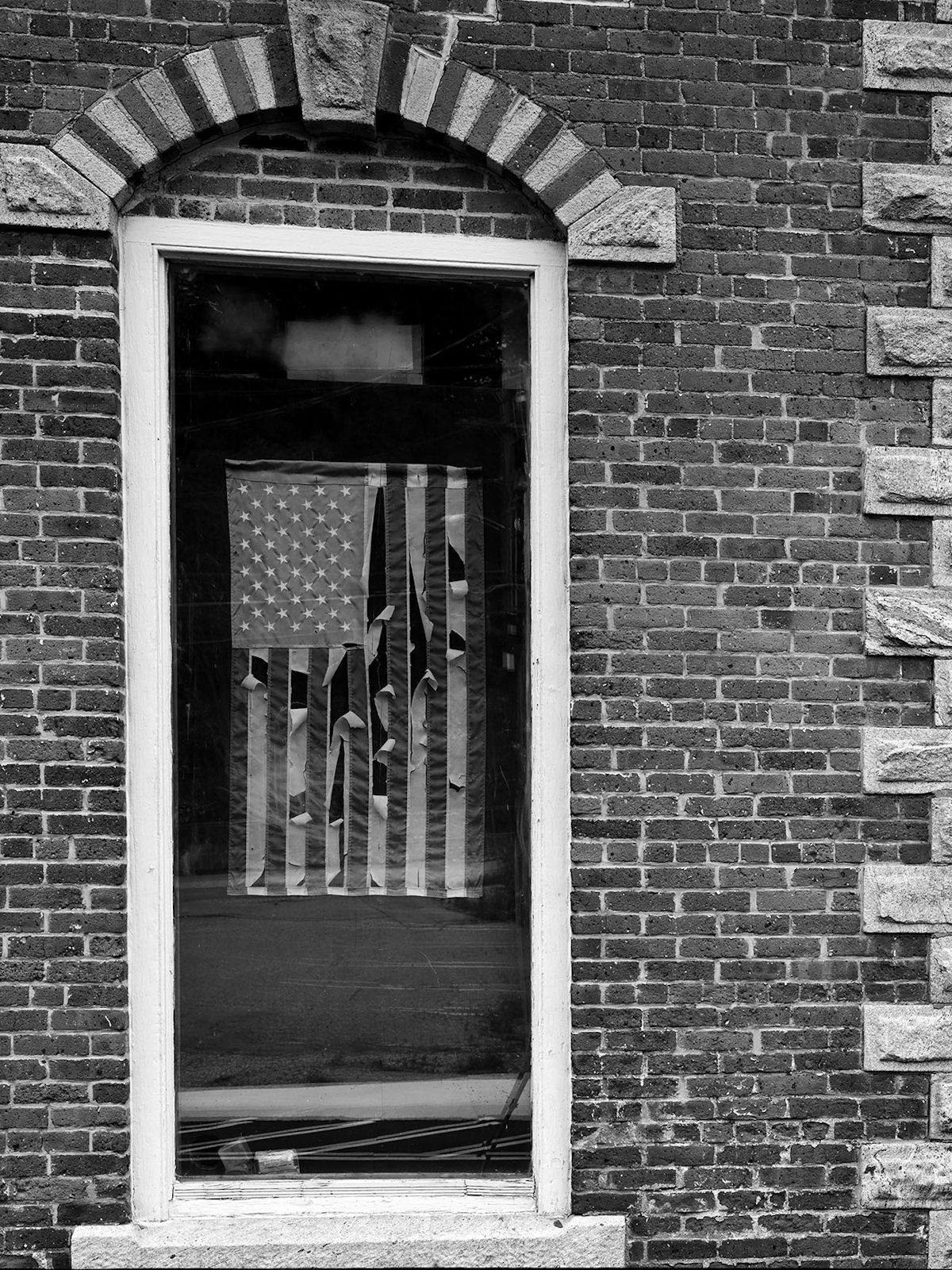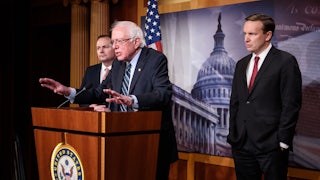It’s not unreasonable to think that we can make out the shape of things to come 28 years in the future. It was right around 28 years ago that the foundations of now emerged: about-to-be ubiquitous personal computers and the internet, cell phones, Fox News, conservative hegemony on economic and social policy, exploding inequality, ultra-assholes’ takeover of the GOP, “political correctness,” and more. On the other hand, grand extrapolations can be folly: The 1990s were also when Francis Fukuyama’s End of History dream—liberal democracy and capitalist prosperity, universal and permanent!—became conventional wisdom. Briefly.
Anyhow, cutting to the chase: I think it’s likely the United States won’t exist in its current form in 2050, that we’ll split into two (or more) independent entities. I’d put the chances of breakup at the lower end of what classic CIA estimates define as “probable”—75 percent certain, “give or take about 12 percent.”
That’s a minority opinion in America. According to a survey conducted in March for this magazine, 83 percent of us think the United States 20 years from now will still consist of the current states under a single national government. Curiously, the same small fraction who think we will break apart (17 percent) said they wanted it to happen (18 percent). In an Economist/YouGov poll in August, 14 percent of people said they thought a civil war is “very likely” in the next 10 years, but another 29 percent consider it “somewhat likely.” A larger share of Republicans than Democrats and independents think it will happen.
So exactly how and when will a split occur? Exactly how would the reconstituted chunks of the United States coexist in 2050? We can only speculate, and I only have 1,000 words.
I think we’ll avoid civil war on the scale of those in Northern Ireland starting in the late 1960s, or in post-Soviet Yugoslavia in the 1990s, or in our own country in the 1860s. Translating the casualty numbers of those wars to our current population would mean, respectively, 700,000, or two million, or seven million Americans killed.
While a national breakup would amount to the Civil War redux in fundamental cultural ways, it’s important to distinguish between history repeating and merely rhyming. This time around, no single irreconcilable moral issue equivalent to slavery is driving us toward a breakup—and no remotely equivalent economic stakes. In the antebellum South, enslaved Black people constituted half of the aggregate wealth of white people, and their labor generated a quarter of all white income; emancipation instantly reduced the median net worth of Southern white households by 38 percent, and of affluent ones by 75 percent. More than a third of American men (and boys) of military age, from 13 into their 40s, enlisted. I really don’t think tens of thousands of twenty-first–century Americans would be willing to kill or risk dying—let alone have their children die—in an insurgency to fight wokeness or to avenge the persecution of the former president, or for unfettered abortion rights, or to preserve the union.
But I do think things will get much worse—more abandonment of reality on the right, more political crises rooted in our inherently undemocratic electoral system, more violence—before they get better. Might a brief, shocking period of extreme civil disorder finally move the right’s elite enablers (Fox News, the donor class) to rein in or cut off or crush their most reckless nihilists and fantasists, leading to some restoration of the pre-radicalized Republican status quo ante? After watching them gradually (since the 1990s) and then suddenly (since 2016) become a party all about embracing liars and freaks and crooks, I’m not hopeful.
A citizenry’s extreme polarization doesn’t usually lead to civil war, but it does correlate strongly with a withering of democracy. A Georgia State University political scientist used a global historical database of democracies to study the ones that had become “perniciously polarized” since 1950. Through 1990, U.S. polarization was rated around one on a zero-to-four scale, about the same as in Canada, Western Europe, and Japan. But during the 1990s, the U.S. number increased, moving well beyond our peer countries and continuing to climb—in 2015 achieving a three rating, the political scientist’s threshold for “pernicious.” Today, those other rich democracies still hover around one, while we’re closing in on four. The report found more than 50 episodes of pernicious polarization around the world, and in two-thirds of the instances where it didn’t subside quickly, the country’s political system morphed from a democracy to an autocracy. Among the 10 that today remain both hyperpolarized and democratic, the only rich, developed one is the United States.
So it seems we may indeed be at a crossroads from which we can’t or won’t turn back to a more tranquil yesteryear, that ahead is either a grossly undemocratic 50-state union or a negotiated breakup.
In the 1990s, when Quebecois separatism was a live issue and the USSR had just dissolved, the Canadian political scientist Robert Young examined peaceful national breakups. In all those he studied, he found that the single “most profound decision on the part of the leadership of the predecessor” national government was to “accept that secession will occur.”
The encouraging modern example is the Velvet Divorce that broke apart Czechoslovakia in 1992. Both sides had sensible leaders who accepted the inevitable. The Czechs wanted a more laissez-faire economy, and the Slovaks wanted more of a welfare state. They gave every citizen a couple of years to decide which new nation would be theirs and agreed to have an open national border.
Even in a U.S. best case, nothing would be so simple. Because of our sheer size and complexity, which contribute to the untenable status quo, the logistics of any breakup would be daunting, epic. It could begin with the secession of one state or several allied states, and it could end with multiple new countries each composed of multiple states. Might eastern Washington and Oregon split off from their cosmopolitan coasts and merge with Idaho et al.? Could big cities trapped in illiberal states join up with new, geographically remote federations—or with a smaller United States—to form a blue archipelago of liberal West Berlins across the continent? And so on.
It would make sense for the formerly united states of America to adopt some European Unionesque arrangement, with open borders and economic coordination. After all, the cultural and political gamuts our states and regions run, from California and Vermont to Wyoming and West Virginia, have their equivalents in the EU itself—the Netherlands but also Hungary, the Nordics but also Poland, abortion totally outlawed in Malta. Likewise with economic disparities: the richer EU countries, such as Ireland and Denmark, are as rich or richer than our richest states, such as New York and California, and our poor states, such as Mississippi and Idaho, are almost as poor as Malta and Cyprus.
By the way, many of the poorest and most Republican states are also the most dependent on federal spending, disproportionately subsidized by taxpayers in blue states. Which makes me imagine that, in some of the autonomous red zones of 2050, there would be a lot of secessionists’ remorse. Tough luck; if we dissolve, it will almost certainly be irreversible. Young, the political scientist, in his study of breakups short of civil war, is unequivocal: “There has never been a case of reunification after secession.”






